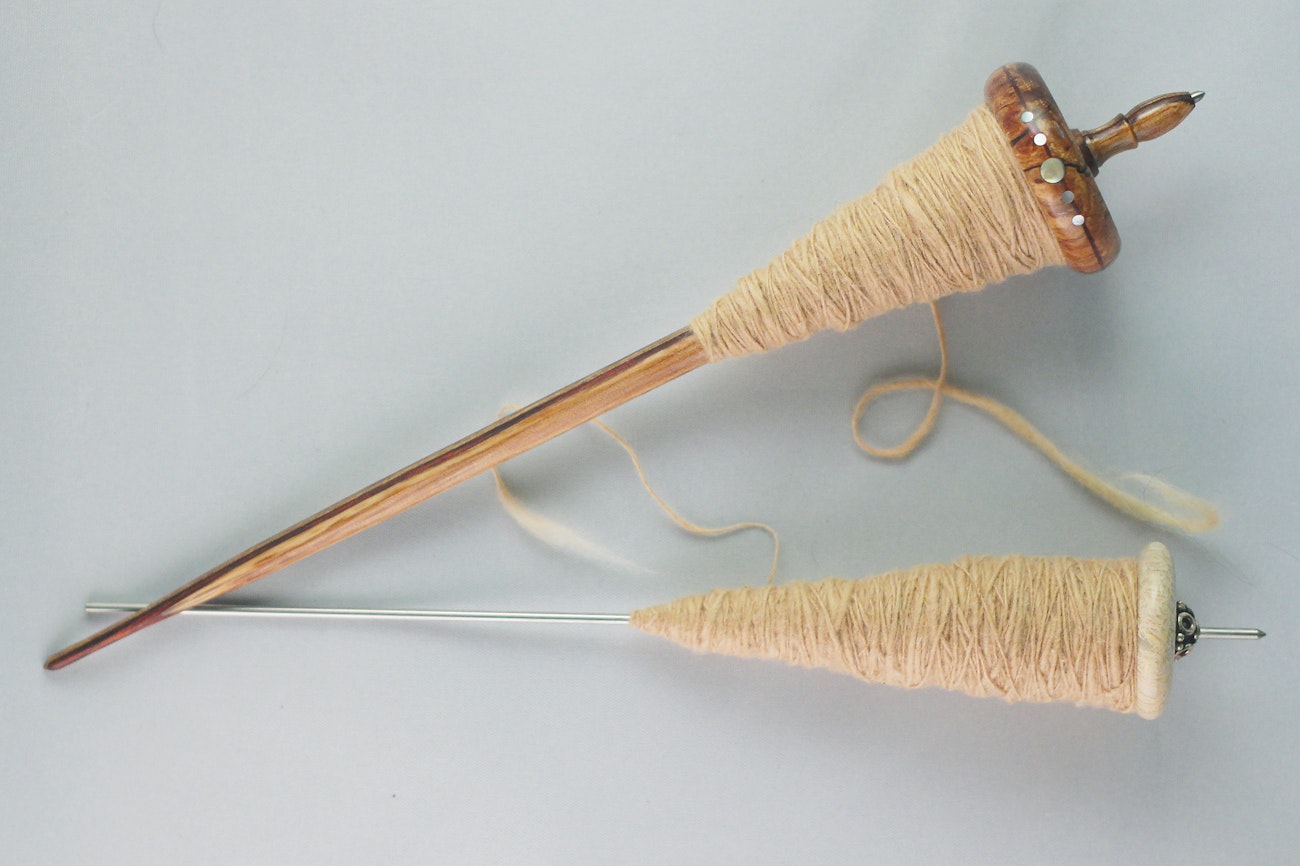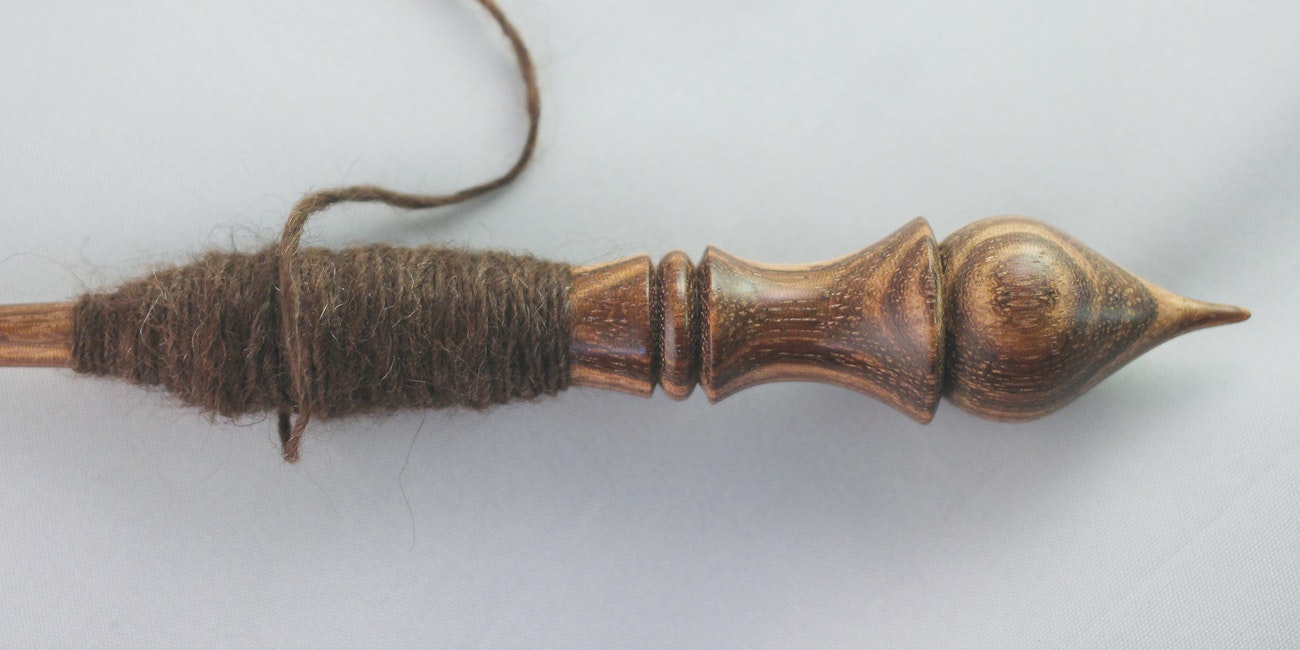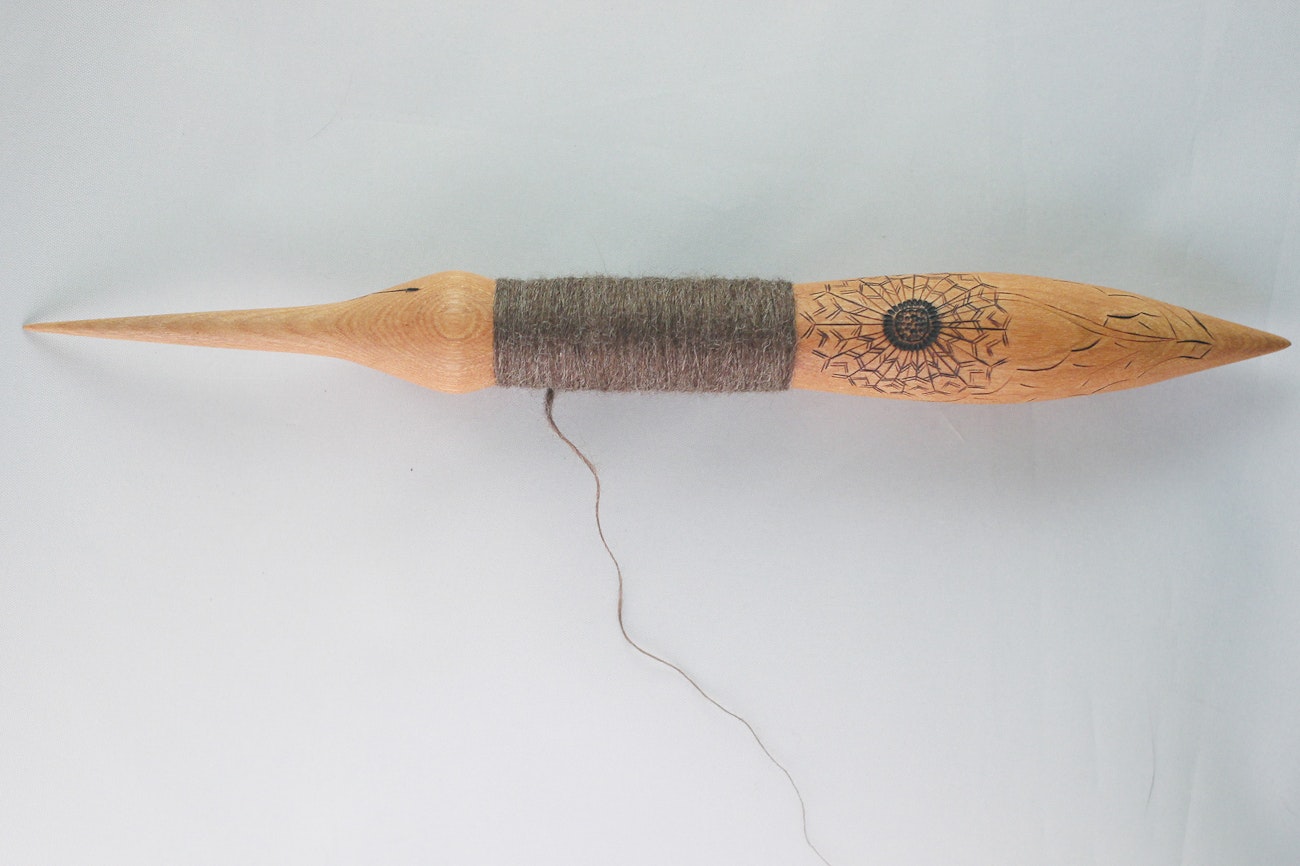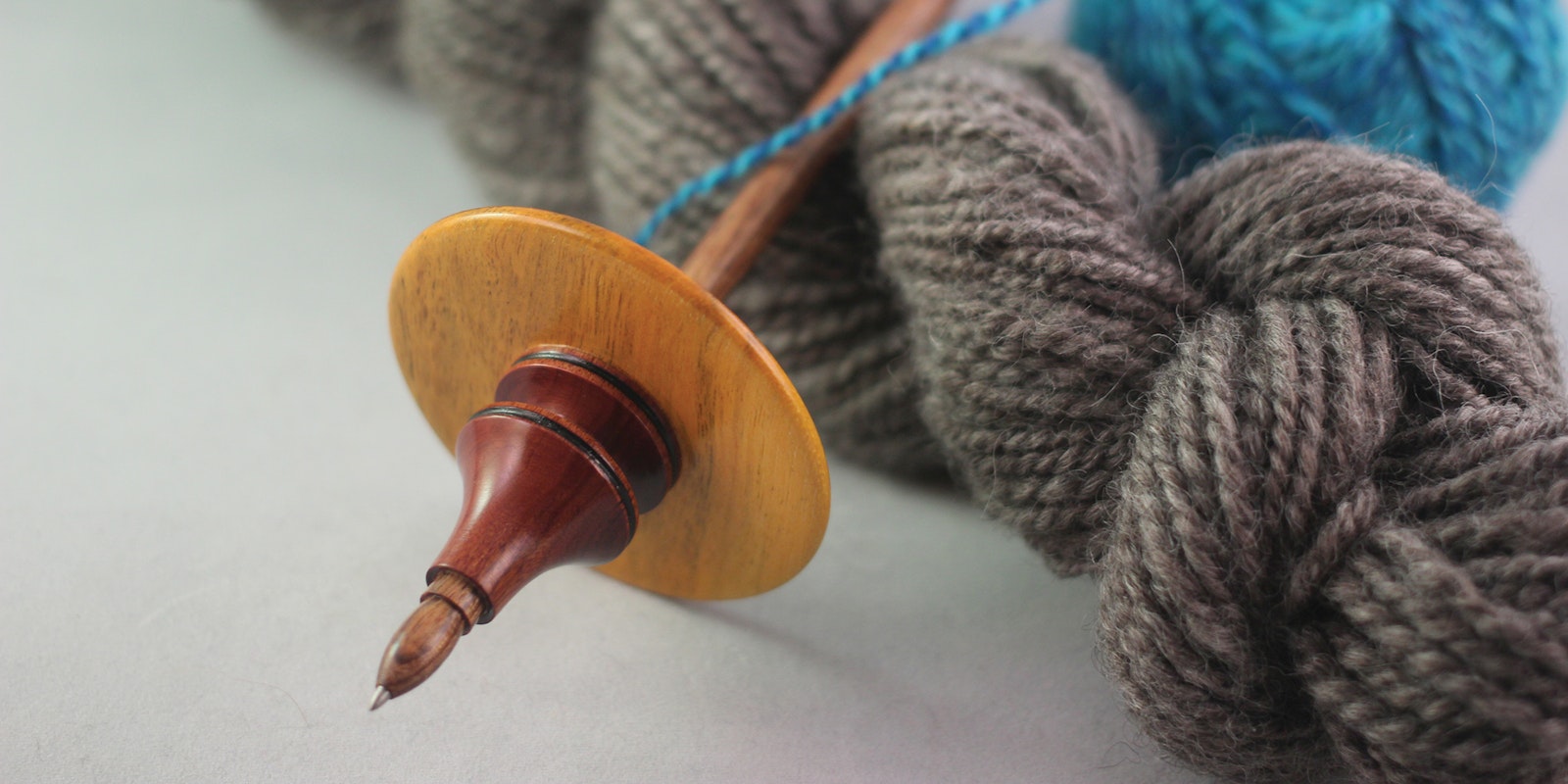In part one of this article, Sukrita talks about the various types of support spindles available from all over the world. Here in part two, she discusses how these tools interact with different types of fiber—Spin Off Editorial Team
Perfect Pairings: Exploring Fiber-Supported Spindle Combinations
With a growing collection of supported spindle styles, I decided to try a few fibers with different types of spindles to find what worked well and what did not. I encourage you to do your own experimentation in pairing fibers with support spindles; my experiences are dependent on my own spinning style. You may find that you have different results or preferences, and your impressions are just as valid.
 Cotton spun on modern taklis
Cotton spun on modern taklis
Cotton
I discovered a fascination for spinning cotton when I saw a guild member and the owner of Spinners’ Cotton, Liz Woods, spin on a takli at a local show. (Read more about Spinners’ Cotton in “Spinning Cotton Down Under” by Joan S. Ruane, Spin Off Spring 2019.) This fiber, which once seemed intimidating to me, suddenly seemed within reach. I didn’t immediately purchase a takli. Instead, I first explored cotton on Tibetan support spindles.
I started by pairing my Dervish-style spindle with ginned white cotton. The fiber makes a slubby textured singles. I find it relatively forgiving to spin without further preparation, as long as one is able to accept the inevitable slubs. Initially, I found the spindle perfect for my beginning-cotton-spinner adventure. The downside was that, as the spindle filled up with fiber, it became harder to spin.
Since I had difficulty with the weight of the spindle, I switched to a lighter purse Tibetan. This time, I selected natural green cotton top to spin. The long, balanced spin made this spindle a pleasure to work with. The green cotton, which is a challenging fiber to spin due to a short staple length, felt like a breeze to spin on this spindle. As the cop built up and the spindle became heavier, I felt again that it was noticeably harder to spin. I was able to spin 7 to 8 grams of cotton comfortably. Unfortunately, when it came time to wind off the singles, I found they broke a lot; I needed a faster spindle.
Finally, I tried two taklis from local makers. The first is a wooden one from the Spindle Shop. It is very lightweight and portable, weighing a mere 17 grams and measuring 23 centimeters from tip to tip. I was thrilled with how this beauty performed; it is a perfect compromise between a traditional takli and a modern spindle, enabling more yarn to fill on the spindle while at the same time providing for ease of use.
The second takli, a small stone bead on a metal shaft, is made by Luba Chambers of Handcrafted Gifts. Contrasted with the wooden one, this spindle is a bead style, thought to have originated in Africa. It’s a wonderful little spinner, perfect for cotton. I used natural brown cotton top, which spun up easily and quickly, filling the little spindle.
Both taklis made cotton spinning appreciably faster and easier. Although I’m pleased with how versatile the Tibetans are, particularly for a beginning cotton spinner, my taklis performed better. Both the quality of thread produced and the ease of use made the taklis superior tools in this case.
 Yak down spun on a Russian spindle
Yak down spun on a Russian spindle
Yak
Tibetan spindles form the majority of my collection, so I tried a quintessential Tibetan fiber: yak down. Yak down is soft, feels warmer in the hands than wool, and can be produced sustainably. I purchased a combed top preparation with fibers that had about a one-inch staple length. This preparation worked best when spun over the fold, and I tried two spindles: a medium-size Tibetan spindle and a Russian spindle.
On the Tibetan spindle, the yak was comfortable to handle and spun smoothly and easily. The short, slippery fibers in this preparation benefited from the twist produced by this spindle’s long, sustained spin. On the Russian spindle, it was a bit different. The constant flicking meant that the process was not as smooth. I suspect that this may be partly due to my spinning style, as I much prefer a longer-spinning spindle in general. In this experiment, it felt to me as though the yak practically spun itself on the Tibetan, whereas it had a less natural feel when spun with the Russian. This might be different with yak down in a less organized preparation.
Wool
There is a reason why spinners love wool—it’s a delight to spin on all kinds of support spindles. I love pairing wool with a Russian spindle or phang with a short spin time. The twist can be easily controlled, and the spinning is rhythmic and relaxing.
On the Russian spindle, I spun Tasmanian Corriedale combed top over the fold; the process was enjoyable and effortless. This spin was instrumental in helping me fall in love with Russian spindles, as I have struggled in the past with the short spin time.
On the Goddess phang, I spun natural-colored Polwarth from Tarndie, another joyful experience. The squat, bulging nature of this spindle means that it has a slightly longer spin time than the Russian. Wool spun from the fold is a great pairing for these spindles, which become more balanced the more fiber is packed onto the spindle’s waist. The longer spin time makes for a relaxing experience; this spindle wants to spin.
 Perfect pairing: Polwarth wool and phang
Perfect pairing: Polwarth wool and phang
Conclusion & Findings
Tibetan spindles, in my experience, are the most versatile class of support spindle. I have found them to be a very accessible starting point into support spinning. The variety of Tibetan spindles on the market today means that there is probably a style perfectly suited to you and to your fiber of choice.
In my search for fiber pairings, I found wool to be the most versatile fiber with the spindle styles I explored. The phangs, and particularly the Goddess, are graceful and beginner friendly, capable of spinning any kind of wool or wool blends. However, specific pairings, such as a takli with cotton, are extremely satisfying.
There is a wide world of support spindles out there, and I have only gone a short way on my journey exploring them. I look forward to many more discoveries and inspirations to come.
Interested in learning more about support spinning? Read the full article in the Fall 2019 issue of Spin Off.
Also, remember that if you are an active subscriber to Spin Off magazine, you have unlimited access to previous issues, including Fall 2019. See our help center for the step-by-step process on how to access them.
Resources
Cotton Australia, www.cottonaustralia.com.au
Sukrita Mahon fell in love with spinning three years ago and has been an active member of the spinning and knitting community in Sydney, Australia, and the Central Coast ever since. Her current obsessions are with natural-colored fleece and, of course, spindles. She enjoys sourdough baking and, when the weather is right, she likes to go on mushroom exploration walks. You can find her on instagram at @su.krita and on Ravelry as sukrita.
Originally published January 10, 2020; updated July 18, 2022.

